|
Family:
Asparagaceae (asparagus family)
[= Agavaceae, Anthericaceae, Hyacinthaceae, Laxmanniaceae, Ruscaceae,
Themidaceae, Behniaceae]
Life
> eukaryotes >
Archaeoplastida >
Chloroplastida
>
Charophyta > Streptophytina > Plantae (land plants)
> Tracheophyta (vascular plants) > Euphyllophyta > Lignophyta (woody plants)
> Spermatophyta (seed plants) > Angiospermae (flowering
plants)
> Monocotyledons > Order: Asparagales
About 153 genera and 2480 species, found worldwide except
polar regions. Twenty seven genera and 768 species are native to southern Africa,
one genus and four species are naturalised, and a further 25 genera and 60
species are cultivated in the region. The family at one time contained only the
genus Asparagus but has been expanded considerably with the incorporation
of Agavaceae, Hyacinthaceae and some other previous families (see
Angiosperm
Phylogeny Website for more).
Genera native to southern Africa
List from
Plants
of Southern Africa - an Online Checklist (SANBI) where old
family delimitations were still being used at time of access.
Albuca
Native to Africa and Arabian
Peninsula, with 128 species native to southern Africa. Previously in
Hyacinthaceae. |
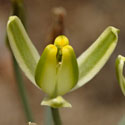
|
|
Asparagus
About 120 species, distributed through Africa, Europe and Asia, and has
also been introduced to Australia. A total of 86 species are native to
southern Africa, and one species,
Asparagus
officinalis (Garden asparagus), is cultivated in
the region. |
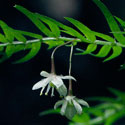 |
Behnia
One species: Behnia reticulata, native to South Africa (Western Cape,
Eastern Cape, KwaZulu-Natal, Mpumalanga, Limpopo), Swaziland and Zimbabwe.
Perennial climber. Previously placed in a separate family: Behniaceae. |
|
Bowiea
About two species,
native to Africa, with one species, Bowiea volubilis, native to
southern Africa. Previously in Hyacinthaceae. |
|
Chlorophytum
About 165 species, found in Africa, Madagascar and Asia. Fifty-seven species
are native to southern Africa. Previously in the Anthericaceae, then the
Agavaceae |
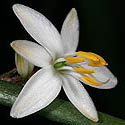 |
Daubenya
Eight species, native to southern Africa. Previously in Hyacinthaceae. |
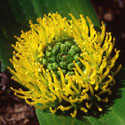 |
Dipcadi
About 30 species,
native to Africa, Madagascar, Socotra, Mediterranean region and India,
with 14 species native to southern Africa. Previously placed in the family
Hyacinthaceae, which has been sunk under the Asparagaceae. |
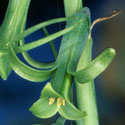 |
|
Dracaena
About 60 species (warmer regions of
the world), with five species native to southern Africa and
a further three species that are cultivated in the region. Previously placed
in the family Dracaenaceae, then the Ruscaceae, neither
of which is now recognised. |
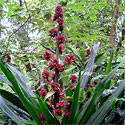 |
Drimia
A total of 65 species, all endemic to southern Africa. Previously in
Hyacinthaceae. |
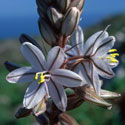 |
Drimiopsis
About 15
species, native to Africa, with eight species native to southern Africa.
Previously in Hyacinthaceae. |
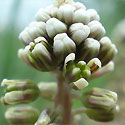 |
|
Eriospermum
Distributed mainly within southern
Africa with 105 of the 127 species occurring in this
region. The remaining species occur further north in
tropical Africa. Previously placed in the family
Eriospermaceae, then the Ruscaceae, neither of which is
now recognised. |
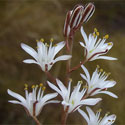 |
Eucomis
About 12 species,
native from South Africa through to Malawi, with 11 species native to
southern Africa. Previously in Hyacinthaceae. |
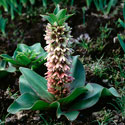 |
| Lachenalia
There are a total of 110 species, all endemic to southern Africa. Previously
in Hyacinthaceae. |
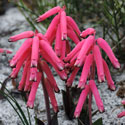
|
Ledebouria
A total of 37
species are native to southern Africa, many of them previously placed in
the genus Scilla. Previously in Hyacinthaceae. |
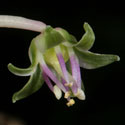 |
Massonia
Eight species,
endemic to southern Africa. Previously in Hyacinthaceae. |
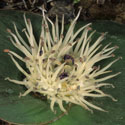 |
|
Merwilla
Three species are native to southern Africa. Previously in
Hyacinthaceae. |
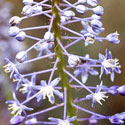 |
| Ornithogalum
About 200 species, native to Africa,
Europe and western Asia, with 91 species native to southern Africa and a
further species that is cultivated in the region. Previously in
Hyacinthaceae. |
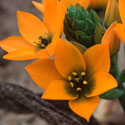
|
Polyxena
Six species,
endemic to southern Africa. Previously in Hyacinthaceae. |
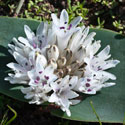 |
Pseudogaltonia
Two species: Pseudogaltonia clavata and Pseudogaltonia liliiflora native to southern Africa.
Previously in Hyacinthaceae. |
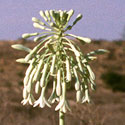 |
Pseudoprospero
One
species, Pseudoprospero firmifolium (= Scilla firmifolia).
Previously in Hyacinthaceae. |
|
Resnova
Five species native to southern Africa. Previously in Hyacinthaceae. |
|
|
Sansevieria
About 60 species (mainly tropical Africa and
Asia), of which 10 are native to southern Africa. An additional
three species are cultivated in the region. Previously placed in the family Dracaenaceae,
then the Ruscaceae, neither of which is now recognised. |
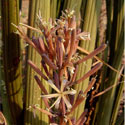 |
|
Schizobasis
One species native to southern Africa - Schizobasis
angolensis (recorded from Zimbabwe). |
|
|
Schizocarphus
One species: Schizocarphus nervosus (= Scilla
nervosa). Previously in Hyacinthaceae. |
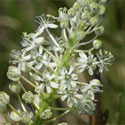 |
|
Spetaea
One species: Spetaea lachenaliiflora, endemic to
the Western Cape. Previously in Hyacinthaceae. |
|
|
Thuranthos
Thuranthos zambesiacum is native to southern Africa
(recorded from Zimbabwe). |
|
Veltheimia
Two species,
endemic to southern Africa (Northern Cape, Western Cape and Eastern Cape).
Previously in Hyacinthaceae. |
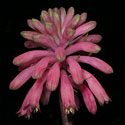 |
Genera naturalised in southern Africa
List from
Plants
of Southern Africa - an Online Checklist (SANBI).
|
Agave
About 275 species, native to the New World. Four species have become
naturalised in southern Africa and there are a further eight species that
are cultivated in this region. The genus includes Sisal Agave sisalana,
which is widely cultivated for production of fibre. Pulque is an alcoholic
drink derived from fermented sap of Agave plants. Mescal and tequila
are distilled from the fermented sap. |
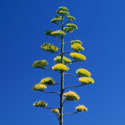 |
Other genera, cultivated in southern Africa
Information from Glen (2002). Species are listed for genera
with only one species represented in southern Africa.
|
Arthropodium cirratum (Rengarenga, Renga lily, New
Zealand rock lily, Maikaika) Native to
New Zealand. Previously in Laxmanniaceae. |
|
|
Aspidistra
Two species cultivated: Aspidistra
elatior and Aspidistra typica, both from
China. Previously in the Ruscaceae. |
|
|
Beaucarnea recurvata (Ponytail palm)
[= Nolina
recurvata]
Native to the USA. Previously in the Ruscaceae. |
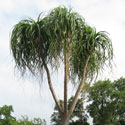 |
|
Bellevalia romana
Native to the Mediterranean. Previously in Hyacinthaceae.
See Encyclopedia
of Life. |
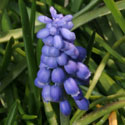 |
Beschorneria
Three species are cultivated in
gardens in southern Africa, all of which are native to Mexico. Previously
placed in the family Agavaceae. |
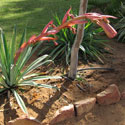 |
|
Brodiaea coronaria
Native to western USA. |
|
|
Convallaria
Convallaria majalis
(Lily-of-the-valley) is native to the north
temperate regions and is cultivated in gardens in
southern Africa. Previously in the Convalariaceae and
then the Ruscaceae. See
Wikipedia. |
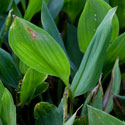 |
|
Cordyline
About 15 species, native to the western Pacific region, including New
Zealand, eastern Australia, southeastern Asia, Polynesia and Hawaii. Four
species are cultivated in southern Africa. Previously placed in
Agavaceae and then Laxmanniaceae. |
|
|
Dasylirion
Seventeen species, native to Mexico and southwestern USA. Four
species of Dasylirion are
cultivated in southern Africa. Previously in the Ruscaceae. |
|
Furcraea
Two species, Fucraea bedinghausii (native to Mexico) and Fucraea
foetida (Mauritius hemp) (native to central and northern South America)
are cultivated in gardens in southern Africa. Previously placed in the
family Agavaceae. |
|
|
Hesperaloe
Hesperaloe parvifolia is native to Texas, USA and is cultivated in
southern Africa. Previously placed in the family Agavaceae. |
|
|
Hosta
Two species cultivated: Hosta taquetii and Hosta
ventricosa. Previously placed in the family Agavaceae. |
|
|
Hyacinthoides
(bluebells)
Three species, native to Europe, of which two are
cultivated in southern Africa. Previously in Hyacinthaceae. |
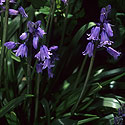 |
|
Hyacinthus orientalis (Common hyacinth, Garden
hyacinth)
Native to Turkey, Syria and Lebanon. Previously in
Hyacinthaceae. See
Wikipedia. |
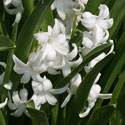 |
|
Liriope
Two species cultivated: Liriope
muscari (from China) and Liriope spicata
(from Japan, China and Korea). Previously in the
Ruscaceae. See
Wikipedia. |
|
|
Muscari
Two species cultivated: Muscari aucheri (Grape
hyacinth) (native to Turkey) and Muscari comosum (Tassel hyacinth)
(native from Europe to southwestern Asia). Previously in Hyacinthaceae. See
Wikipedia. |
|
Manfreda
Manfreda variegata is native to Texas and
Mexico and is cultivated in gardens in southern Africa. Previously placed in
the family Agavaceae. |
|
|
Ophiopogon
Ophiopogon jaburan (native to Japan) and Ophiopogon japonicus (Japanese
hyacinth - native to Japan, China and Korea) are
cultivated in southern Africa. Previously in the
Ruscaceae. |
|
|
Polygonatum
Polygonatum odoratum (Angular
Solomon's-seal) is native to Eurasia and is
cultivated in southern Africa. Previously in the
Ruscaceae. See
Wikipedia. |
|
|
Prospero autumnale (Autumn
squill) [= Scilla autumnalis]
Native from Europe to Iraq. See
Wikipedia. |
|
|
Reineckea carnea
Native to China and Japan. Previously
in the Ruscaceae. |
|
|
Ruscus aculeatus (Butchers'
broom)
Native to Europe and the Azores and cultivated in southern Africa.
Previously in the Ruscaceae. See
Wikipedia. |
|
Scilla
About 50 species, Native to Africa, Europe and Asia. Two species are cultivated in
southern Africa. A
number of African species previously in Scilla have been
transferred to other genera, particularly Ledebouria.
Scilla was previously placed in the family Hyacinthaceae, which
has been sunk under the Asparagaceae. |
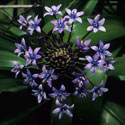 |
|
Triteleia uniflora
Native to western USA. |
|
|
Yucca Four
species, all originating from the USA/Mexico are cultivated in southern
Africa. Previously placed in the family Agavaceae. |
|
Publications
|
